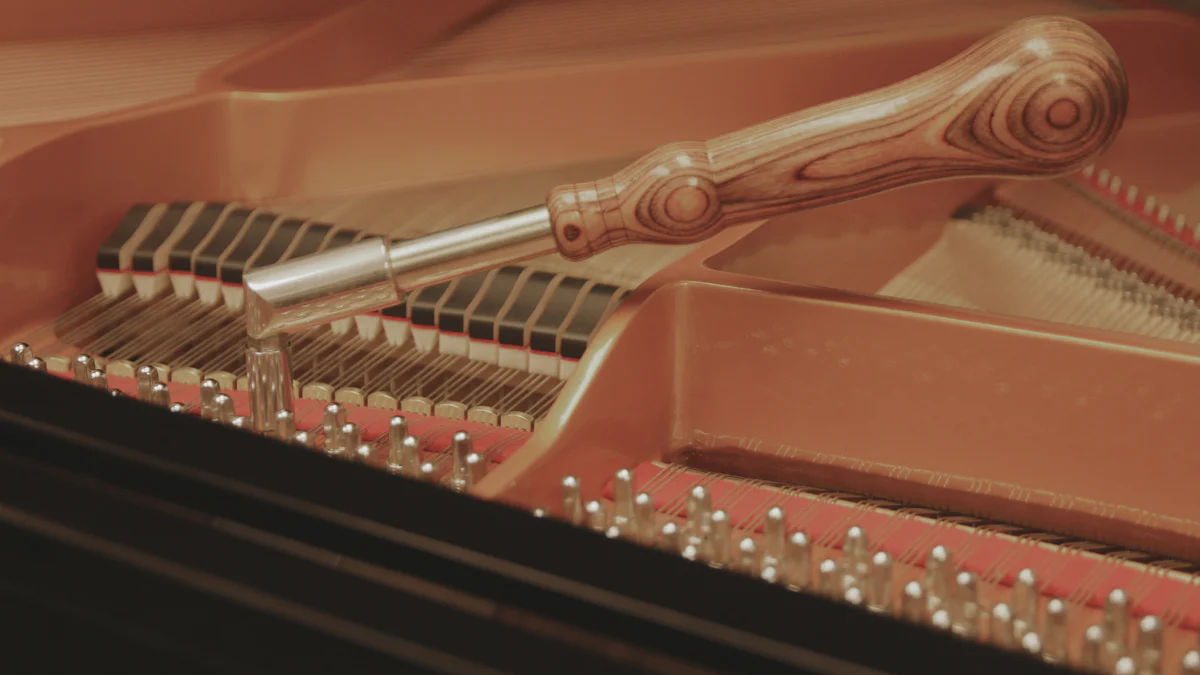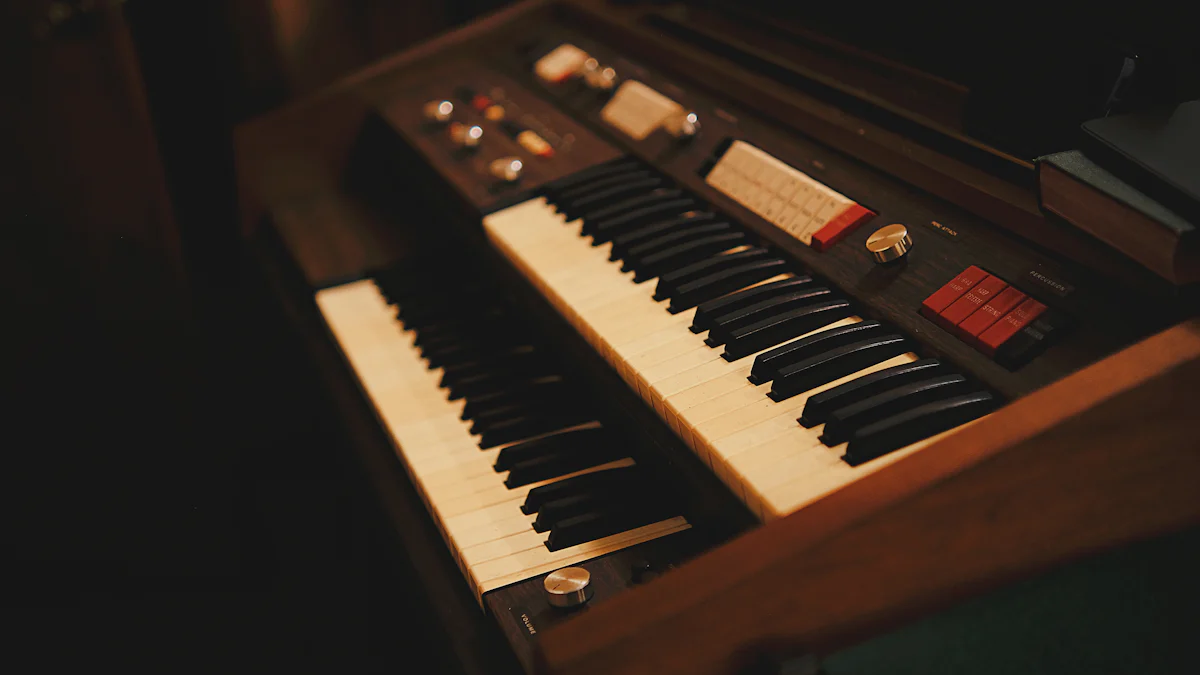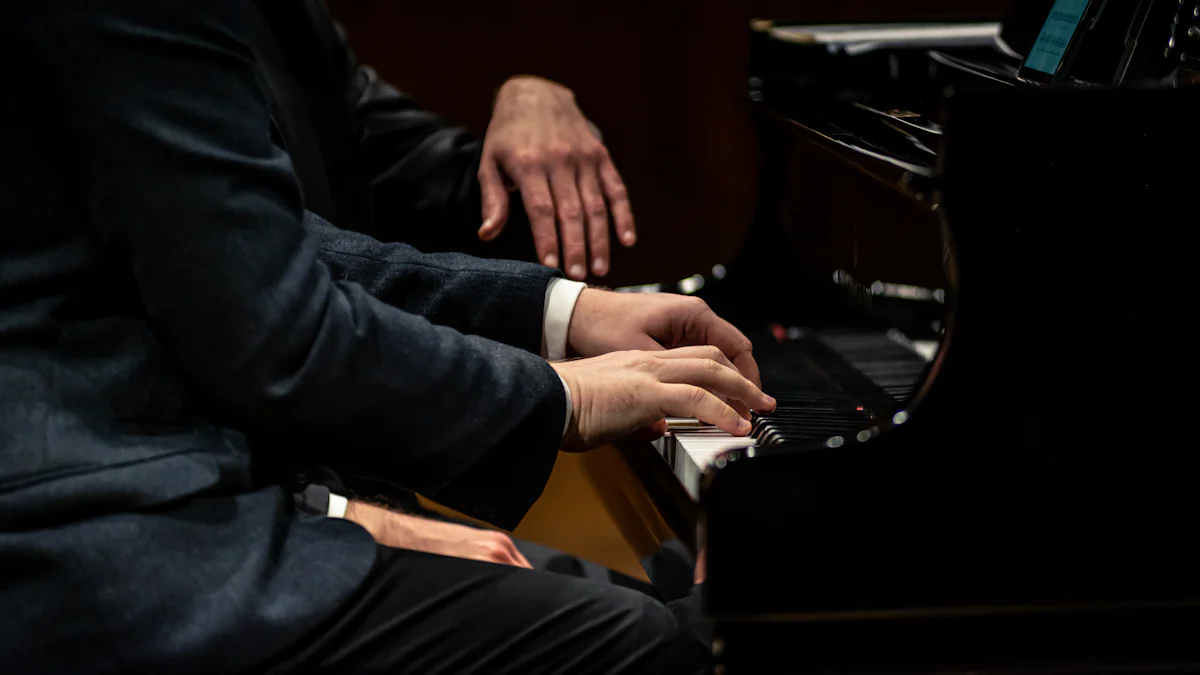
Piano tuning ensures that a piano produces accurate and harmonious notes. Regular tuning is essential due to factors like temperature, humidity, and playing intensity. The piano tuning spanner, also known as a tuning lever or hammer, is a crucial tool in this process. Mastering the use of this tool is vital for achieving precise tuning. Proper handling of the piano tuning spanner prevents damage to the tuning pins and maintains the instrument’s integrity.
Understanding the Piano Tuning Spanner

What is a Piano Tuning Spanner?
Definition and Purpose
A piano tuning spanner, also known as a tuning lever or hammer, serves as the primary tool for adjusting the pitch of piano strings. The spanner fits onto the square-shaped heads of the tuning pins. By turning these pins, the spanner increases or decreases the tension of the strings, thereby altering the pitch.
Different Types of Piano Tuning Spanners
Various types of piano tuning spanners exist to cater to different needs. Professional tuners often use a nylon piano tuning lever due to its durability and precision. Another common type is the #2 star tip tuning hammer, which fits most tuning pins except those with extremely small heads. Each type offers unique features, but all aim to provide accurate tuning adjustments.
Anatomy of a Piano Tuning Spanner
Key Components
A piano tuning spanner consists of several key components:
- Handle: Provides grip and leverage.
- Head: Fits onto the tuning pin.
- Tip: Engages with the square head of the tuning pin.
How Each Component Functions
Each component of the piano tuning spanner plays a crucial role in the tuning process. The handle allows the tuner to apply the necessary force to turn the tuning pin. The head, usually made of durable material, ensures a secure fit onto the pin. The tip, often designed to fit specific pin sizes, engages with the square head to facilitate precise adjustments.
Preparing for Tuning
Essential Tools and Equipment
Tuning Spanner
A piano tuning spanner is the primary tool for adjusting the pitch of piano strings. The spanner fits onto the square-shaped heads of the tuning pins. By turning these pins, the spanner increases or decreases the tension of the strings, altering the pitch. Professional tuners often use a nylon piano tuning lever due to its durability and precision. A #2 star tip tuning hammer fits most tuning pins except those with extremely small heads.
Tuning Fork or Electronic Tuner
A tuning fork or electronic tuner serves as a reference for setting the initial pitch. The tuning fork produces a specific pitch when struck, usually A440 (the A above middle C). An electronic tuner provides a visual display of the pitch, making it easier to match the string’s pitch accurately. Both tools are essential for achieving precise tuning.
Mutes and Other Accessories
Mutes silence adjacent strings during the tuning process. Rubber or felt mutes are commonly used. These accessories help isolate the string being tuned, allowing for more accurate adjustments. Other useful accessories include a temperament strip, which mutes multiple strings simultaneously, and a tuning hammer extension for hard-to-reach pins.
Safety Precautions
Handling the Spanner Correctly
Proper handling of the piano tuning spanner is crucial to avoid damaging the tuning pins. Always ensure a secure fit between the spanner and the tuning pin before applying force. Avoid sudden or jerky movements, as these can strip the pin or cause it to break. Use steady, controlled motions to make adjustments.
Protecting the Piano
Protecting the piano during tuning is equally important. Place a cloth or felt strip over the strings to prevent accidental damage from the spanner. Ensure that the spanner does not come into contact with other parts of the piano, such as the soundboard or the plate. Regular maintenance and care of the piano tuning spanner also contribute to the longevity of both the tool and the instrument.
Basic Tuning Techniques
Setting the Initial Pitch
Using a Tuning Fork
A tuning fork serves as a reliable reference for setting the initial pitch. Striking the fork on a hard surface produces a specific pitch, usually A440 (the A above middle C). Placing the base of the vibrating fork on the piano’s soundboard amplifies the sound. The tuner listens closely and adjusts the corresponding string to match the pitch of the fork. This method relies heavily on the tuner’s ability to discern slight differences in pitch.
Using an Electronic Tuner
An electronic tuner offers a more visual approach to setting the initial pitch. The device displays the pitch of the string when plucked. The tuner adjusts the string until the display indicates the correct pitch. This method provides a clear and precise reference, making it easier for those less experienced in discerning pitch by ear. Many professional tuners use electronic tuners due to their accuracy and convenience.
Adjusting the Tuning Pins
Proper Spanner Placement
Proper placement of the piano tuning spanner is crucial for effective tuning. The spanner must fit securely onto the square head of the tuning pin. Ensuring a snug fit prevents slippage and potential damage to the pin. The tuner should hold the spanner at a comfortable angle, allowing for controlled movements. Incorrect placement can lead to inaccurate adjustments and possible harm to the instrument.
Turning Techniques
Turning techniques play a significant role in achieving precise tuning. The tuner must use steady, controlled motions to turn the tuning pin. Quick or jerky movements can strip the pin or cause it to break. Small, incremental adjustments are often necessary to fine-tune the pitch. Professional tuners develop a feel for the right amount of pressure and movement required. Mastery of these techniques ensures accurate and stable tuning results.
Professional piano tuners often rely on their experience and expertise to achieve optimal results. Studies show that professional tuners use beating rates to fine-tune pianos, listening for the subtle pulsations between slightly out-of-tune strings. This skill, combined with the proper use of tools and techniques, leads to a well-tuned instrument.
Advanced Tuning Techniques
Fine-Tuning
Listening for Beats
Fine-tuning requires a keen ear for detecting beats. Beats occur when two strings vibrate at slightly different frequencies, creating a pulsating sound. Tuners listen for these beats to determine the exact pitch difference between strings. Reducing the frequency of beats indicates that the strings are nearing perfect unison. Mastery of this technique ensures a more harmonious and stable tuning.
Making Micro Adjustments
Micro adjustments involve making very small changes to the tension of the strings. Tuners use precise and controlled movements with the tuning spanner. Small increments in turning the tuning pins help achieve the desired pitch without overshooting. This level of precision requires practice and a steady hand. Professional tuners often develop a feel for the exact amount of pressure needed for these fine adjustments.
Dealing with Difficult Pins
Techniques for Stubborn Pins
Stubborn pins present a common challenge in piano tuning. These pins may resist turning due to age or lack of maintenance. Tuners can use several techniques to address this issue. Applying a small amount of lubricant can ease the movement of the pin. Another method involves gently tapping the tuning hammer to loosen the pin before turning. Consistent, controlled force helps prevent damage while achieving the necessary adjustment.
When to Seek Professional Help
Some situations require the expertise of a professional tuner. Extremely tight or damaged pins may need specialized tools or techniques beyond basic tuning skills. Professional tuners possess the mechanical skill to handle these challenges without causing further damage. Seeking professional help ensures the longevity and proper functioning of the piano. Regular maintenance by a skilled tuner can prevent many of these issues from arising.
Maintenance and Care of the Piano Tuning Spanner

Cleaning and Storage
Regular Cleaning Tips
Regular cleaning of the piano tuning spanner ensures its longevity and performance. Dust and debris can accumulate on the spanner, affecting its functionality. Use a soft cloth to wipe down the handle, head, and tip after each use. For stubborn grime, a mild detergent solution can help. Avoid using harsh chemicals that can corrode the metal components. Consistent cleaning prevents build-up and maintains the tool’s precision.
Proper Storage Practices
Proper storage practices protect the piano tuning spanner from damage. Store the spanner in a dry, cool place to prevent rust and corrosion. A dedicated tool case or pouch provides additional protection. Ensure that the spanner does not come into contact with other tools that could scratch or dent it. Proper storage extends the life of the spanner and keeps it ready for use.
Troubleshooting Common Issues
Identifying Wear and Tear
Identifying wear and tear on the piano tuning spanner is crucial for maintaining its effectiveness. Regular inspections can reveal signs of damage such as worn tips or loose heads. A worn tip may not fit securely onto the tuning pin, leading to inaccurate adjustments. Loose heads can cause instability during tuning. Addressing these issues early prevents further damage and ensures precise tuning.
When to Replace Your Spanner
Knowing when to replace the piano tuning spanner is essential for optimal performance. If the spanner shows significant wear or damage, replacement becomes necessary. Persistent issues like slipping tips or difficulty in turning pins indicate the need for a new spanner. Investing in a high-quality replacement ensures continued accuracy and reliability in piano tuning.
Mastering the piano tuning spanner is essential for achieving precise and harmonious tuning. Consistent practice and patience are crucial in developing proficiency with this tool. Piano tuning combines scientific rigor with artistic intuition, requiring a deep understanding of music and sound physics. Achieving the perfect balance between technical accuracy and artistic expression ensures a well-tuned instrument. Regular practice will enhance skills and confidence, leading to exceptional tuning results.
See Also
Scooter Upgrades: High-Quality Parts for Optimal Performance
Discovering a Range of Sock Options for Both Genders
